
iSV2-RS Series Integrated Servo Motor
User Manual

User Manual of iSV2-RS Integrated Servo
2
Foreword
Thank you for purchasing Leadshine iSV2-RS series Integrated Servo Motor. This manual will
provide information on the iSV2-RS series servo products regarding product safety &
specifications, installations & wiring, tuning & problem diagnostics.
Please contact us at tech@leadshine.com if you need further technical support.
Incorrect operation may cause unexpected accident, please read this manual carefully before using
product.
We reserve the right to modify equipment and documentation without prior notice.
We won’t undertake any responsibility with any customer’s modification of product and the
warranty of product will be canceled at the same time.
Safety Precautions
Please read the safety instructions carefully before using the products and pay attention to the safety
signs.
Might incur death or serious injury
Might cause injury to operating personals or damage to equipment
Might cause damage to equipment
Hot surface. Do not touch
Protective Earth
Safety instructions
Warning
The design of the product is not to be used in mechanical system which may incur health hazard.
Users should be aware of the product safety precautions during design and installations of the
equipment to prevent any unwanted accident.
Upon receiving Caution
The use of damaged or faulty product(s) is prohibited.
Please refer to item checklist. If the labels don’t match, please do not install.
!
Caution
!
Warning
!
Warning
!
Caution

User Manual of iSV2-RS Integrated Servo
3
Transportation Caution
Please provide storage and transportation under protected conditions.
Do not stack the products too high up to prevent toppling.
The product should be packaged properly during transportation,
Do not hold the product by the cable, motor shaft or encoder while transporting it.
The product should be protected from external forces and shock.
Installation Caution
Servo drive and Motor:
Do not install around combustibles to prevent fire hazard.
Avoid vibration and impact.
Do not install products that are damaged or incomplete.
Servo drive:
Please install in electrical cabinet with sufficient protection from outside elements.
Reserve sufficient gap as per the installation guide.
Make sure to have good heat sinking.
Avoid dust, corrosive gas, conductive object or fluid and combustibles.
Servo Motor:
Make sure installation is tight to prevent it from loosening.
Prevent fluid from leaking into motor and encoder.
Protect motor from impact to avoid damaging encoder.
Motor shaft should not bear the load beyond the limits as specified.
Wiring Warning
Participate installation personals should have sufficient training in product installation safety.
Please power off and wait for 10 minutes to make sure a full discharge of electricity.
Servo drive and motor must be connected to ground.
Connect the cables only after servo drive motor installed correctly
Make sure the wires are properly managed and insulation layer is not torn to prevent
electrocution. Caution
Wiring must be correctly connected to prevent damage to product(s)
Servo motor U, V, W terminal should be connected correctly and NOT connected directly to an
AC power supply.
Capacitor, inductor or filter shouldn’t be installed between servo motor and servo drive.
Connecting wires or any non-heat resistant components should be put near to heat sink of the
servo drive or motor.
The flyback diode which is connected in parallel to output signal DC relay must not be connected
in reverse.
!
Caution
!
Caution
!
Warning
!
Caution

User Manual of iSV2-RS Integrated Servo
4
Tuning and running Caution
Make sure the wirings of servo drive and servo motor are installed and fixed properly before
powering on.
On the first time tuning of the product, it is recommended to run unloaded until all the parameter
settings are confirmed to prevent any damage to the product or machine.
Usage Caution
Please install an emergency stop button on machine to stop operation immediately if there is an
accident.
Please make sure machine is stopped before clearing an alarm.
Servo drive must be matched with specified motor.
Frequent restart of the servo system might incur damage to the product.
Servo drive and motor will be hot to touch shortly after power off. Please be careful.
Modification(s) to servo system is prohibited.
Error Handling Warning
Please wait for 5 minutes after powering off for the electricity to be fully discharged before
uninstalling the cables.
Participate maintenance personals should have sufficient training in maintenance and operation
of this product series. Caution
Please handle the error before clearing an alarm.
Keep away from machine after a restart upon alarm. Mechanical axis might suddenly move. Such
hazard should be prevented during the utilization of the product.
Model Selection Caution
Rated torque of the servo motor should be higher than continuous designated torque when fully
loaded.
Load inertia ratio of the motor should be lower or equals to recommended value for specified
models
Servo drive must be matched with specified motor.
!
Caution
!
Caution
!
Warning
!
Caution
!
Caution

User Manual of iSV2-RS Integrated Servo
5
Warranty Information
Available for
Leadshine overseas warranty only covers Leadshine integrated servo products that are obtained
through Leadshine certified sales channel outside of China.
Warranty claim
All Leadshine integrated servo products overseas enjoy 18-month warranty period.
Due to unforeseen circumstances in different sales regions around the globe, we recommend
users to seek technical support from directed sales channel as any warranty claim or repair
services may be required.
Please be informed that any maintenance/repair work that is outside of the warranty claim
conditions might incur some charges and to be confirmed before product(s) is being sent in.
The duration required for maintenance work to be done is to be confirmed after initial check-up
but we reserve the right to prolong the repair duration if needed.
Discontinued products within warranty period will be replaced with a product of similar
specifications.
Steps to warranty claim
1. Visit Leadshine global site www.leadshine.com to look for local certified sales channel.
2. Contact designated sales channel to check if any fee might incur. May include repair fee, spare
part cost or shipping cost.
Circumstances where warranty claim is not available
Damage/Loss due to occurrence of natural or man-made disaster such as fire, flood or
earthquake.
Installation or wiring error
If there is any modification done to the product
Warranty label on products is torn or not existing
Not a product bought from Leadshine certified global network of retailers/distributors.
Before warranty claim
Please backup device parameters before any repair work/warranty claim. Leadshine and
Leadshine certified retailers/distributors will not be held responsibilities for any data loss.
If available, please send product back in original packaging or make sure it is well packaged to
prevent any damage to the product during shipping.
Leadshine Technology Co.,Ltd. and its certified sales channel reserved the final right of the
interpretation of the warranty information.

User Manual of iSV2-RS Integrated Servo
6
TABLE OF CONTENT
CHAPTER 1 INTRODUCTION ................................................................................................................................... 9
1.1 PRODUCT INTRODUCTION ............................................................................................................................ 9
1.2 MODEL NUMBER STRUCTURE ................................................................................................................................... 10
1.3 SERVO DRIVE TECHNICAL SPECIFICATIONS ................................................................................................................... 11
1.4 INTEGRATED MOTOR PORTS AND CONNECTORS ........................................................................................................... 12
CHAPTER 2 INSTALLATION & WIRING .................................................................................................................. 13
2.1 SERVO DRIVE INSTALLATION ..................................................................................................................................... 13
2.1.1 Servo drive installation environment ......................................................................................................... 13
2.1.2 Integrated Servo Motor Installation .......................................................................................................... 13
2.2 INTEGRATED SERVO MOTOR BASIC INFORMATION ......................................................................................................... 14
2.2.1 Speed-torque curves ................................................................................................................................... 14
2.2.2 Integrated Servo Motor Dimension ............................................................................................................ 16
2.3 ISV2-RS WIRING DIAGRAM ..................................................................................................................................... 17
2.4 INTEGRATED MOTOR PORTS ..................................................................................................................................... 18
2.4.1 CN1 I/O Signal Port .................................................................................................................................... 19
2.4.2 CN3/CN4 Power supply & Regenerative Resistor Port ............................................................................... 21
2.4.3 CN5 Modbus RS485 Communication Port .................................................................................................. 21
2.4.4 CN7 RS232 Tuning Port .............................................................................................................................. 22
2.4.8 ID spin dial RSC ........................................................................................................................................... 22
2.4.6 Baud rate/Terminal resistor switch SW ..................................................................................................... 23
2.5 CABLE SELECTION ................................................................................................................................................... 24
2.5.1 Communication Cable ................................................................................................................................ 24
2.5.4 Tuning Cable .............................................................................................................................................. 24
2.6 REGENERATIVE RESISTOR SELECTION .......................................................................................................................... 25
CHAPTER 3 PARAMETER ...................................................................................................................................... 29
3.1 PARAMETERS LIST ................................................................................................................................................... 29
3.2 PARAMETERS DESCRIPTION ....................................................................................................................................... 40
3.2.1 [Class 0] Basic Settings ............................................................................................................................... 40
3.2.2 [Class 1] Gain adjustments ......................................................................................................................... 45
3.2.3 [Class 2] Vibration suppression .................................................................................................................. 52
3.2.4 [Class 3] Velocity/Torque control ............................................................................................................... 56
3.2.5 [Class 4]I/O Monitoring Settings ................................................................................................................ 63
3.2.6 [Class 5] Extension Settings ........................................................................................................................ 70
3.2.7 [Class 6] Other settings .............................................................................................................................. 74
3.2.8 [Class 7] Factory settings ........................................................................................................................... 78
3.2.9 [Class 8] PR control parameters ................................................................................................................. 79
3.2.10 [Class 9] PR control path parameters ....................................................................................................... 88
3.2.11 [Class B] Status Parameters ................................................................................................................... 104

User Manual of iSV2-RS Integrated Servo
7
CHAPTER 4 CONTROL MODE .............................................................................................................................. 107
4.1 POSITION CONTROL ............................................................................................................................................... 108
4.1.1 Pulse input and direction settings ............................................................................................................ 109
4.1.2 Electronic Gear Ratio................................................................................................................................ 110
4.1.3 Position command filter ........................................................................................................................... 111
4.1.4 Encoder feedback output ......................................................................................................................... 113
4.1.5 Positioning completed INP signal output ................................................................................................. 113
4.2 VELOCITY CONTROL ............................................................................................................................................... 115
4.2.1 Velocity command input control .............................................................................................................. 116
4.2.2 Velocity command acceleration/deceleration ......................................................................................... 118
4.2.3 Velocity reached signal AT-SPEED output ................................................................................................ 119
4.2.4 Velocity coincidence V-COIN signal output .............................................................................................. 119
4.2.5 Zero Speed Clamp .................................................................................................................................... 120
4.3 TORQUE CONTROL ................................................................................................................................................ 121
4.3.1 Torque command input control ............................................................................................................... 122
4.3.2 Torque velocity limit ................................................................................................................................. 123
4.3.3 Torque limit (TL-SEL) ................................................................................................................................ 124
4.4 HYBRID CONTROL MODE ....................................................................................................................................... 125
CHAPTER 5 APPLICATION CASE .......................................................................................................................... 126
5.1 GAIN ADJUSTMENT ............................................................................................................................................... 126
5.2 INERTIA RATIO IDENTIFICATION FUNCTION ................................................................................................................. 128
5.3 AUTO GAIN ADJUSTMENT ....................................................................................................................................... 131
5.4 MANUAL GAIN ADJUSTMENT................................................................................................................................... 135
5.4.1 Parameters adjustment under different control modes........................................................................... 137
5.4.2 Gain switching .......................................................................................................................................... 139
5.5 3RD GAIN SWITCHING ............................................................................................................................................. 143
5.6 MODEL FOLLOWING CONTROL ................................................................................................................................ 144
5.7 FEEDFORWARD GAIN ............................................................................................................................................. 145
5.7.1 Velocity feedforward ................................................................................................................................ 145
5.7.2 Torque feedforward ................................................................................................................................. 146
5.8 FRICTION COMPENSATION FUNCTION ........................................................................................................................ 148
5.9 SAFETY FUNCTIONS ............................................................................................................................................... 149
5.9.1 Max. motor rotational speed limitation ................................................................................................... 149
5.9.2 Max. duration for motor to stop after disabling ...................................................................................... 150
5.9.3 External brake deactivation output signal BRK-OFF ................................................................................ 150
5.9.4 Servo stopping mode ................................................................................................................................ 152
5.9.5 Emergency stop function .......................................................................................................................... 152
5.10 VIBRATION SUPPRESSION ..................................................................................................................................... 153
5.10.1 Mechanical resonance suppression ....................................................................................................... 153
5.10.2 End vibration suppression ...................................................................................................................... 157
5.11 MULTITURN ABSOLUTE ENCODER ........................................................................................................................... 158
5.11.1 Parameters setting ................................................................................................................................. 158
5.11.2 Read absolute position ........................................................................................................................... 159
5.11.3 Absolute Encoder Related Alarm............................................................................................................ 161
5.12 REGENERATIVE RESISTOR SETTINGS ........................................................................................................................ 162

User Manual of iSV2-RS Integrated Servo
8
CHAPTER 6 MODBUS COMMUNICATION ........................................................................................................... 163
6.1 COMMUNICATION CONNECTION .............................................................................................................................. 163
6.2 MODBUS RS485 COMMUNICATION PARAMETERS AND PORTS ...................................................................................... 164
6.3 MODBUS PROTOCOL ............................................................................................................................................. 166
6.3.1 Read Data 0x03 ........................................................................................................................................ 166
6.3.2 Write single data 0x06 ............................................................................................................................. 166
6.3.3 Write multiple data 0x10 ......................................................................................................................... 167
6.3.4 Reply error ................................................................................................................................................ 168
6.3.5 Auxiliary function parameters .................................................................................................................. 168
6.3.6 Alarm info parameters ............................................................................................................................. 169
6.4 FREQUENTLY OCCURRED ISSUES AND SOLUTIONS WITH RS485 COMMUNICATION. ............................................................ 170
CHAPTER 7 PR MODE ......................................................................................................................................... 173
7.1 PR FUNCTIONS INTRODUCTION ................................................................................................................................ 174
7.2 CONTROL PARAMETERS .......................................................................................................................................... 175
7.3 PR MOTION ........................................................................................................................................................ 177
7.3.1 Homing ..................................................................................................................................................... 177
7.3.2 Position limit and emergency stop ........................................................................................................... 182
7.3.3 JOG ........................................................................................................................................................... 182
7.3.4 Path motion ............................................................................................................................................. 183
7.4 PR CONTROL ....................................................................................................................................................... 186
7.4.1 PR module in Motion Studio ..................................................................................................................... 186
7.4.2 Physical I/O .............................................................................................................................................. 188
7.4.3 485 communication ................................................................................................................................. 190
7.4.4 Path trigger .............................................................................................................................................. 192
7.5 PR MOTION ......................................................................................................................................................... 193
7.5.1 Trigger using physical I/O ........................................................................................................................ 193
7.5.2 Control using 485 communication ........................................................................................................... 194
CHAPTER 8 WARNING AND ALARM ................................................................................................................... 196
8.1 SERVO DRIVE ALARM INDICATOR ............................................................................................................................. 196
8.2 SERVO DRIVE ALARM ............................................................................................................................................. 197
8.3 ALARM HANDLING ................................................................................................................................................ 198
8.4 ALARM CLEARING ................................................................................................................................................. 209
8.4.1 Servo Drive Alarm Clearing ...................................................................................................................... 209
CONTACT US ...................................................................................................................................................... 210

User Manual of iSV2-RS Integrated Servo
9
Chapter 1 Introduction
1.1 Product Introduction
iSV2-RS Series Integrated Servo Product is a new integrated servo motors product range that
we have proudly developed at Leadshine Technology Co.,Ltd. This product series provides more
in demanded functionalities and control.
iSV2-RS Series Integrated Servo Motor comes with voltage rating of 24 to 60 VDC and current
rating from 6A up to 19A (max. peak current: 57A). This series supports Modbus communication
protocol in addition to pulse + direction input control. Using RS485 protocol, multi axis network
of ISV2-RS series servo motor can be realized and controlled from 1 single master device.
iSV2-RS series Integrated Servo Motor also comes with 17-bit magnetic absolute incremental
encoder which offers better accuracy and stability.
First time user of the iSV2-RS series servo products can refer to this manual for more
information on this product that cannot be covered in this short introduction. For further
technical support, please do contact us or any local Leadshine certified retailers on Contact Us
page.

User Manual of iSV2-RS Integrated Servo
10
1.2 Model Number Structure
iSV2 – RS 60 40 V48 G
Motor Series
iSV2iSV2 Series Integrated
Servo Motor
Communication Protocol
RS Modbus RTU/Pulse+D ir ec ti on
CAN CANopen
Motor Brake
HWithout brake
GWith brake
Rated Voltage
24 24VDC
48 48VDC
Motor Flange Size
57 57mm
60 60mm
80 80mm
86 86mm
Rated Power
20 200W
40 400W
75 750W

User Manual of iSV2-RS Integrated Servo
11
1.3 Servo Drive Technical Specifications
iSV2-RS series RS6020V24 RS
6020V48
RS6040V48
RS5740V48 RS8075V48
RS8675V48
Rated Current (Arms)
11
6.5
10
19
Peak Current (Arms)
34
20
28
57
Flange size (mm)
60
60 , 57
80 , 86
Main power supply 24~60VDC
Drive mode
SVPWM sinusoidal wave drive
Velocity regulation ratio
5000:1
Electronic gear ratio 1~32767/1~32767
Matching encoders ABZ or RS485 encoder(Tamagawa protocol)
Input
2 pulse differential 5V Digital input (Pulse+direction)
4 configurable NPN/PNP 24V Digital Inputs: DI3-DI6
1. Homing Switch (HOME-SWITCH)
2. Positive limit switch (POT)
3. Negative limit switch (NOT)
4. Clear Alarm (A-CLR)
5. Emergency Stop (E-STOP)
Output
2 configurable single-ended NPN/PNP 24V, 8mA digital outputs
1. Alarm (ALARM)
2. Servo ready (SRDY)
3. External brake off (BRK-OFF)
4. Positioning completed (INP1)
5. Reached velocity(AT-SPEED)
6. Zero speed position (ZSP)
7. Velocity coincidence (V-COIN)
8. Position command (P-CMD)
9. Velocity command (V-CMD)
Alarm
Current circuit error, DC bus overvoltage, DC bus undercurrent, overcurrent,
overcurrent on IPM, motor overload, regenerative resistor overload, encoder
disconnected, encoder initialization error, encoder data error, excessive
position deviation, overspeed, I/O configuration error, EEPROM parameter
saving CRC checksum error, positive/negative position limit valid, forced
alarm input valid
Indicator light
Red & Green LED
Tuning Software
Motion Studio 2
Motion Studio 2
Configure parameters for current, position and velocity loop. Parameter
uploading using .lsr parameter files. Drive and motor data monitoring using
oscilloscope.
Communication Port
RS-232,1:1; RS485,0:N(0≤N≤127), Modbus protocol
Load-Inertia
Smaller than 20 times motor inertia
Dimension
175*100*27 mm
118*79.5*25.5 mm
Environmental
requirements
Storage
condition
Avoid direct sunlight. Keep away from heat generating
devices, dust, oil, corrosive liquid/gas and places with
strong vibration or high humidity. Prohibit combustible
gas and conductive material waste.
Temperature
-20
℃
~+45
℃
(Please allow air circulation if >45
℃)
Storage
temperature
-20
℃
~+65
℃
Humidity 40—90%RH (Condensation free)
Installation
Vertical and level to ground

User Manual of iSV2-RS Integrated Servo
12
1.4 Integrated Motor Ports and Connectors
iSV2-RS Series Integrated Servo Motor (6020/6040/8075/5740/8675)
I/O Port
Indicator LED
(PWR/ALM)
Baud Rate/Terminal
Resistor Switch
RS232 Tuning Port
Main Power Supply
(DC+, DC-)
Regenerative Resistor
(RB+, RB-)
ID Spin Dial (RSC)
Modbus RTU
Communication Port

User Manual of iSV2-RS Integrated Servo
13
Chapter 2 Installation & Wiring
2.1 Servo Drive Installation
2.1.1 Servo drive installation environment
2.1.2 Integrated Servo Motor Installation
1.
Protection
: iSV2 series integrated servo motor is not waterproof type motors; please prevent
any fluid from splashing or pouring over the motors.
2.
Temperature, humidity:
Environmental temperature should be between -25~40℃ (without
freezing). Temperature raise of the motor is normal under continuous operation please ensure
enough cooling for motors to work at optimum rate. Humidity should be less 90%RH without
condensation.
3.
Vibration:
Please ensure that vibration is not more than 0.5G(4.9m/s2)
4.
Installations
:
(a) Please don’t hammer on the motor or shaft while trying to remove timing pulley to
prevent damage to encoder.
(b) Please use a flexible coupling to prevent excessively large torsion on the shaft.
Temperature
Storage: -20~+65℃ (Condensation free);
Installation: -20~+45℃ ( Please allow air circulation if >45
℃
)
Humidity
Under 90%RH (Condensation free)
Altitude
Up to 1000m above sea level
Atmospheric
pressure
86 ~ 106kPa
Vibration
Less than 0.5G (4.9m/s2) 10-55Hz (non-continuous working)
Atmospheric
No corrosive gas, combustibles, dirt or dust.
IP ratings
IP20

User Manual of iSV2-RS Integrated Servo
14
2.2 Integrated Servo Motor basic information
2.2.1 Speed-torque curves
200W Motors (iSV2-**20*)
400W Motors (iSV2-**40*)

User Manual of iSV2-RS Integrated Servo
15
750W Motors (iSV2-**75*)

User Manual of iSV2-RS Integrated Servo
16
2.2.2 Integrated Servo Motor Dimension
iSV2 Series
LC
LL
H
LA
LZ
TP
RH
W
CAN6020V24H
60
95.7
79 Ø70 Ø5.5
12
16 5
CAN6020V24G
124.7
CAN6020V48H
95.7
CAN6020V48G
124.7
CAN6040V48H
112.7
CAN6040V48G
124.7
CAN8075V48H
80
128.8
100 Ø90 Ø6.6 21.5 6
CAN8075V48G
160.3

User Manual of iSV2-RS Integrated Servo
17
2.3 iSV2-RS Wiring Diagram
iSV2-RS Wiring Diagram
Please use a 2kΩ resistor connected in series if pulse input voltage is 24V. Pulse and
directional input port only supports 5V signal.
Make sure data transferring cables are as short as possible. Keep CN1 cable under 3m and
CN2 cable under 10m. Use shielded double winding cables to cut down on electromagnetic
interference.
DI3-DI6 support NPN and PNP. External signal power supply 12-24V is recommended.
If the load for DO is an inductive load such as a relay, please install freewheeling diodes on
both ends of the load in parallel. Please keep in mind that if the diode is connected in reverse, it
might cause damage to the drive.
Use non-fuse breaker (NFB) to cut off power supply to the drive in case of emergency.

User Manual of iSV2-RS Integrated Servo
18
2.4 Integrated Motor Ports
iSV2-CAN 6020/6040/8075
Connector
Label
CN1
I/O signal port
CN3
Main Power Supply (DC+, DC-)
CN4
Regenerative resistor port (RB+, RB-)
CN5
Modbus RTU Communication port
CN7
RS232 tuning port
SW
Baud rate/Terminal resistor switch
RSC
ID spin dial
LED
Indicator LED (PWR/ALM)
CN1 I/O Port
Indicator LED
(PWR/ALM)
Baud Rate/Terminal
Resistor Switch
CN7 RS232
Tuning Port
CN3 Main Power Supply
(DC+, DC-)
CN4 Regenerative Resistor
(RB+, RB-)
ID Spin Dial (RSC)
CN5 Modb us RTU
Communication
Port
Cooling Vent

User Manual of iSV2-RS Integrated Servo
19
2.4.1 CN1 I/O Signal Port
Diagram
CN
Pin
Signal
Description
CN1
1
DI1+
Pulse input, differential, 5V, 500kHz
2
DI1+
3
DI2+
Direction input, differential, 5V, 500kHz
4
DI2+
5
COM_IN
Common DI
6
DI3
Servo enable
7
DI4
Alarm clear
8
DI5
Homing switch
9
DI6
Position limit
10
DO1
Alarm output, current output <100mA
11 DO2 Servo ready, current output <100mA
12 COM_OUT Common output
Pulse input
Pulse and direction input only support 5V signal. Please connect in series a resistor with resistance of
2kΩ for 24V pulse and direction signal. Please refer to the following differential and single-ended input
wiring diagrams.
Following tables show pulse input signal and sequences. When a 2-phase input is used, 4 times of pulse
frequency is ≤500kHz.
Pulse input
mode
Counter
clockwise Clockwise Settings
Pulse signal
Command pulse
+ direction
PUL
DIR
21
12 11

User Manual of iSV2-RS Integrated Servo
20
Symbol
Differential input
Single-ended input
tck
>
2μs
>
5μs
th
>
1μs
>
2.5μs
tl
>
1μs
>
2.5μs
trh
<
0.2μs
<
0.3μs
trl
<
0.2μs
<
0.3μs
t
s
>
1μs
>
2.5μs
tqck
>
8μs
>
10μs
tqh
>
4μs
>
5μs
tql
>
4μs
>
5μs
tqrh
<
0.2μs
<
0.3μs
tqrl
<
0.2μs
<
0.3μs
tqs
>
1μs
>
2.5μs
I/O Signal Wiring Diagram
1. DI3-DI6 supports NPN and PNP configuration. Recommended to use an external control signal power s
supply of 12-24VDC.
2. DO1-DO2 are single ended outputs with 100mA current output that supports NPN and PNP
configuration. Recommended to use an external power supply of 24VDC. If the load is an inductive load
such as a relay, please install freewheeling diodes on both ends of the load in parallel. If the diode is
connected in reverse, it might cause damage to the driver.
4.7K
COM_IN
DI1
DI1+
DI1-
COM_OUT
DO3
DI
DO (differential)
DO
Page is loading ...
Page is loading ...
Page is loading ...
Page is loading ...
Page is loading ...
Page is loading ...
Page is loading ...
Page is loading ...
Page is loading ...
Page is loading ...
Page is loading ...
Page is loading ...
Page is loading ...
Page is loading ...
Page is loading ...
Page is loading ...
Page is loading ...
Page is loading ...
Page is loading ...
Page is loading ...
Page is loading ...
Page is loading ...
Page is loading ...
Page is loading ...
Page is loading ...
Page is loading ...
Page is loading ...
Page is loading ...
Page is loading ...
Page is loading ...
Page is loading ...
Page is loading ...
Page is loading ...
Page is loading ...
Page is loading ...
Page is loading ...
Page is loading ...
Page is loading ...
Page is loading ...
Page is loading ...
Page is loading ...
Page is loading ...
Page is loading ...
Page is loading ...
Page is loading ...
Page is loading ...
Page is loading ...
Page is loading ...
Page is loading ...
Page is loading ...
Page is loading ...
Page is loading ...
Page is loading ...
Page is loading ...
Page is loading ...
Page is loading ...
Page is loading ...
Page is loading ...
Page is loading ...
Page is loading ...
Page is loading ...
Page is loading ...
Page is loading ...
Page is loading ...
Page is loading ...
Page is loading ...
Page is loading ...
Page is loading ...
Page is loading ...
Page is loading ...
Page is loading ...
Page is loading ...
Page is loading ...
Page is loading ...
Page is loading ...
Page is loading ...
Page is loading ...
Page is loading ...
Page is loading ...
Page is loading ...
Page is loading ...
Page is loading ...
Page is loading ...
Page is loading ...
Page is loading ...
Page is loading ...
Page is loading ...
Page is loading ...
Page is loading ...
Page is loading ...
Page is loading ...
Page is loading ...
Page is loading ...
Page is loading ...
Page is loading ...
Page is loading ...
Page is loading ...
Page is loading ...
Page is loading ...
Page is loading ...
Page is loading ...
Page is loading ...
Page is loading ...
Page is loading ...
Page is loading ...
Page is loading ...
Page is loading ...
Page is loading ...
Page is loading ...
Page is loading ...
Page is loading ...
Page is loading ...
Page is loading ...
Page is loading ...
Page is loading ...
Page is loading ...
Page is loading ...
Page is loading ...
Page is loading ...
Page is loading ...
Page is loading ...
Page is loading ...
Page is loading ...
Page is loading ...
Page is loading ...
Page is loading ...
Page is loading ...
Page is loading ...
Page is loading ...
Page is loading ...
Page is loading ...
Page is loading ...
Page is loading ...
Page is loading ...
Page is loading ...
Page is loading ...
Page is loading ...
Page is loading ...
Page is loading ...
Page is loading ...
Page is loading ...
Page is loading ...
Page is loading ...
Page is loading ...
Page is loading ...
Page is loading ...
Page is loading ...
Page is loading ...
Page is loading ...
Page is loading ...
Page is loading ...
Page is loading ...
Page is loading ...
Page is loading ...
Page is loading ...
Page is loading ...
Page is loading ...
Page is loading ...
Page is loading ...
Page is loading ...
Page is loading ...
Page is loading ...
Page is loading ...
Page is loading ...
Page is loading ...
Page is loading ...
Page is loading ...
Page is loading ...
Page is loading ...
Page is loading ...
Page is loading ...
Page is loading ...
Page is loading ...
Page is loading ...
Page is loading ...
Page is loading ...
Page is loading ...
Page is loading ...
Page is loading ...
Page is loading ...
Page is loading ...
Page is loading ...
Page is loading ...
Page is loading ...
Page is loading ...
Page is loading ...
Page is loading ...
Page is loading ...
Page is loading ...
Page is loading ...
-
 1
1
-
 2
2
-
 3
3
-
 4
4
-
 5
5
-
 6
6
-
 7
7
-
 8
8
-
 9
9
-
 10
10
-
 11
11
-
 12
12
-
 13
13
-
 14
14
-
 15
15
-
 16
16
-
 17
17
-
 18
18
-
 19
19
-
 20
20
-
 21
21
-
 22
22
-
 23
23
-
 24
24
-
 25
25
-
 26
26
-
 27
27
-
 28
28
-
 29
29
-
 30
30
-
 31
31
-
 32
32
-
 33
33
-
 34
34
-
 35
35
-
 36
36
-
 37
37
-
 38
38
-
 39
39
-
 40
40
-
 41
41
-
 42
42
-
 43
43
-
 44
44
-
 45
45
-
 46
46
-
 47
47
-
 48
48
-
 49
49
-
 50
50
-
 51
51
-
 52
52
-
 53
53
-
 54
54
-
 55
55
-
 56
56
-
 57
57
-
 58
58
-
 59
59
-
 60
60
-
 61
61
-
 62
62
-
 63
63
-
 64
64
-
 65
65
-
 66
66
-
 67
67
-
 68
68
-
 69
69
-
 70
70
-
 71
71
-
 72
72
-
 73
73
-
 74
74
-
 75
75
-
 76
76
-
 77
77
-
 78
78
-
 79
79
-
 80
80
-
 81
81
-
 82
82
-
 83
83
-
 84
84
-
 85
85
-
 86
86
-
 87
87
-
 88
88
-
 89
89
-
 90
90
-
 91
91
-
 92
92
-
 93
93
-
 94
94
-
 95
95
-
 96
96
-
 97
97
-
 98
98
-
 99
99
-
 100
100
-
 101
101
-
 102
102
-
 103
103
-
 104
104
-
 105
105
-
 106
106
-
 107
107
-
 108
108
-
 109
109
-
 110
110
-
 111
111
-
 112
112
-
 113
113
-
 114
114
-
 115
115
-
 116
116
-
 117
117
-
 118
118
-
 119
119
-
 120
120
-
 121
121
-
 122
122
-
 123
123
-
 124
124
-
 125
125
-
 126
126
-
 127
127
-
 128
128
-
 129
129
-
 130
130
-
 131
131
-
 132
132
-
 133
133
-
 134
134
-
 135
135
-
 136
136
-
 137
137
-
 138
138
-
 139
139
-
 140
140
-
 141
141
-
 142
142
-
 143
143
-
 144
144
-
 145
145
-
 146
146
-
 147
147
-
 148
148
-
 149
149
-
 150
150
-
 151
151
-
 152
152
-
 153
153
-
 154
154
-
 155
155
-
 156
156
-
 157
157
-
 158
158
-
 159
159
-
 160
160
-
 161
161
-
 162
162
-
 163
163
-
 164
164
-
 165
165
-
 166
166
-
 167
167
-
 168
168
-
 169
169
-
 170
170
-
 171
171
-
 172
172
-
 173
173
-
 174
174
-
 175
175
-
 176
176
-
 177
177
-
 178
178
-
 179
179
-
 180
180
-
 181
181
-
 182
182
-
 183
183
-
 184
184
-
 185
185
-
 186
186
-
 187
187
-
 188
188
-
 189
189
-
 190
190
-
 191
191
-
 192
192
-
 193
193
-
 194
194
-
 195
195
-
 196
196
-
 197
197
-
 198
198
-
 199
199
-
 200
200
-
 201
201
-
 202
202
-
 203
203
-
 204
204
-
 205
205
-
 206
206
-
 207
207
-
 208
208
-
 209
209
-
 210
210
Leadshine iSV2-RS6040V48 User manual
- Type
- User manual
- This manual is also suitable for
Ask a question and I''ll find the answer in the document
Finding information in a document is now easier with AI
Related papers
-
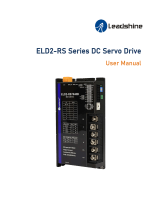 Leadshine ELD2-RS Series DC Servo Drive User manual
Leadshine ELD2-RS Series DC Servo Drive User manual
-
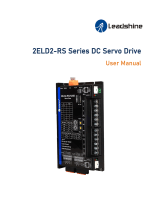 Leadshine 2ELD2-RS Series DC Servo Drive User manual
Leadshine 2ELD2-RS Series DC Servo Drive User manual
-
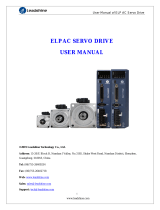 Leadshine ELP-D&RS User manual
Leadshine ELP-D&RS User manual
-
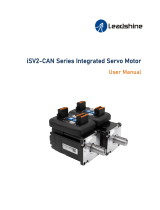 Leadshine iSV2-CAN Series Integrated Servo Motor User manual
Leadshine iSV2-CAN Series Integrated Servo Motor User manual
-
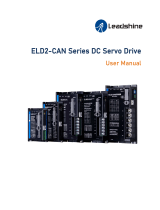 Leadshine ELD2-CAN Series DC Servo Drive User manual
Leadshine ELD2-CAN Series DC Servo Drive User manual
-
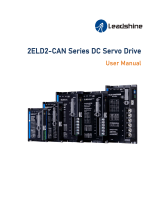 Leadshine 2ELD2-CAN Series DC Servo Drive User manual
Leadshine 2ELD2-CAN Series DC Servo Drive User manual
-
 Leadshine ELP AC Servo User manual
Leadshine ELP AC Servo User manual
-
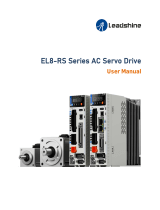 Leadshine EL8-RS Series AC Servo Drive User manual
Leadshine EL8-RS Series AC Servo Drive User manual
-
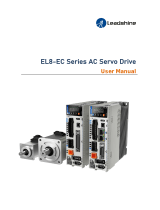 Leadshine EL8-EC Series AC Servo Drive User manual
Leadshine EL8-EC Series AC Servo Drive User manual
-
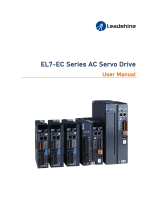 Leadshine EL7-EC Series AC Servo Drive User manual
Leadshine EL7-EC Series AC Servo Drive User manual
Other documents
-
Delta Electronics ASDA-B2 series User manual
-
Delta Electronics ASD-B1021-A User manual
-
Delta Electronics ASDA-B User manual
-
Delta Electronics ASD-A1021-AB User manual
-
 Simphoenix CA100 series Owner's manual
Simphoenix CA100 series Owner's manual
-
Mitsubishi Electric MR-J4-_A_-RJ/MR-J4-03A6-RJ SERVO AMPLIFIER User manual
-
Mitsubishi Electric MR-JE-_C SERVO AMPLIFIER User manual
-
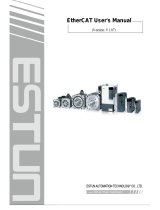 Estun EtherCAT User manual
Estun EtherCAT User manual
-
Mitsubishi Electric MR-JE-_C SERVO AMPLIFIER User manual
-
Mitsubishi Electric MR-J4-_A_(-RJ)/MR-J4-03A6(-RJ) SERVO AMPLIFIER User manual





























































































































































































































